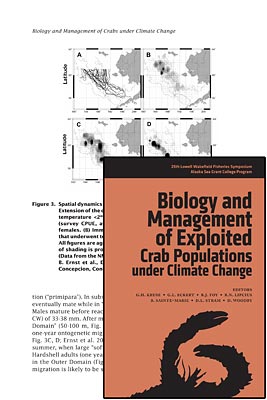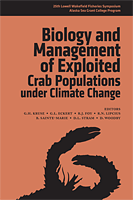
Overview of Bitter Crab Disease in Tanner Crabs, Chionoecetes bairdi, in Southeast Alaska from 2001 to 2008
J. Bednarski, C.E. Siddon, G.H. Bishop, and J.F. Morado
- Price: $1.65 Sale: $0.00
| Format | Price | |
|---|---|---|
| PDF download [1 MB] Bypass cart and download |
Free | Add to Cart |
Description
We present visual prevalence of infection and distribution trends in Tanner crab, Chionoecetes bairdi, infected with the dinoflagellate Hematodinium spp., the causative agent of bitter crab disease (BCD), in southeast Alaska from 2001 to 2008. Analysis of visual detection of BCD from annual research surveys showed that trends of prevalence among survey areas were inconsistent. In some locations a significant decrease in visually infected crab occurred over time, whereas BCD increased or remained stable in other areas. In addition, BCD generally declined slightly with depth. The prevalence of BCD was greater in recently molted crab, as determined by shell condition, and increased as shell size increased in new shell males. Although we cannot yet explain the variability in BCD, the dramatic differences in BCD prevalence over small spatial scales in southeast Alaska will foster a better understanding of BCD, especially as more detailed environmental data are obtained.
Item details
- Item number: AK-SG-10-01i
- Year: 2010
- DOI: https://doi.org/10.4027/bmecpcc.2010.07


 This is part of
This is part of 
